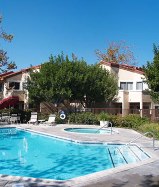Resolution: Try Exotic Wood Furniture in My Home
 May 8, 2012
May 8, 2012  Twist Table from Thai Handmade GiftsJanet Ramin - When one thinks of wood, usually the popular ones come to mind: oak, maple, walnut, cherry, and mahogany. Other cheaper woods such as birch, poplar, and beech have become more prominent in the market due to deforestation. But have you heard of the following exotic woods? You might want to set a design resolution this spring to explore adding one or more of these fine woods into your home, adding beauty and utility to your decor.
Twist Table from Thai Handmade GiftsJanet Ramin - When one thinks of wood, usually the popular ones come to mind: oak, maple, walnut, cherry, and mahogany. Other cheaper woods such as birch, poplar, and beech have become more prominent in the market due to deforestation. But have you heard of the following exotic woods? You might want to set a design resolution this spring to explore adding one or more of these fine woods into your home, adding beauty and utility to your decor.
Acacia is a beautiful hardwood found in Australia and Hawaii that has a wide range of appearances and hence can fit in a variety of interiors – from sophisticated to rustic. Acacia has a warm color, varying from light to dark tones, as shown in the photos above and below. The wood also shows off a highly-figured grain, as seen in the Twist Table above. A darker version with a less wavy grain is seen in the Rustic Table from West Elm.
 Rustic Acacia table from West ElmMango wood is a popular hardwood from Thailand and the Philippines that is eco-friendly. Mango wood is cut from the mango fruit tree once the tree has finished bearing fruit. Since these trees have to be chopped down anyway in order to make way for new trees that bear fruit, the resulting timber is recycled to other uses such as furniture and accessories. Mango wood has a yellow-orange tone as seen in the sideboard and the ball table below.
Rustic Acacia table from West ElmMango wood is a popular hardwood from Thailand and the Philippines that is eco-friendly. Mango wood is cut from the mango fruit tree once the tree has finished bearing fruit. Since these trees have to be chopped down anyway in order to make way for new trees that bear fruit, the resulting timber is recycled to other uses such as furniture and accessories. Mango wood has a yellow-orange tone as seen in the sideboard and the ball table below.
 Mango wood sideboard
Mango wood sideboard Mango wood Ball Table by Thai Handmade GiftsSapele is a hardwood similar to mahogany with a light grain. It can be stained from a medium orangey-red to a deeper reddish-brown, as seen in this gorgeous chest of drawers designed by David N. Ebner and vanity from S. Julian. Sapele is a more modestly-priced wood and therefore a good substitution for the more expensive mahogany.
Mango wood Ball Table by Thai Handmade GiftsSapele is a hardwood similar to mahogany with a light grain. It can be stained from a medium orangey-red to a deeper reddish-brown, as seen in this gorgeous chest of drawers designed by David N. Ebner and vanity from S. Julian. Sapele is a more modestly-priced wood and therefore a good substitution for the more expensive mahogany.
 Sapele chest by David Ebner
Sapele chest by David Ebner Sapele Vanity by S. JulianThen we have Jatoba, a hardwood similar to cherry and sometimes marketed as “Brazilian Cherry”, but really is not from the same family. Jatoba wood varies from a light orangey-brown to a reddish-brown, darkening over time. The wood has a medium grain that is wavy sometimes as shown in this side table from Interior Connector. Jatoba is a very dense wood, hard to nail or screw into, so the wood is mostly used in flooring and only sometimes in furniture.
Sapele Vanity by S. JulianThen we have Jatoba, a hardwood similar to cherry and sometimes marketed as “Brazilian Cherry”, but really is not from the same family. Jatoba wood varies from a light orangey-brown to a reddish-brown, darkening over time. The wood has a medium grain that is wavy sometimes as shown in this side table from Interior Connector. Jatoba is a very dense wood, hard to nail or screw into, so the wood is mostly used in flooring and only sometimes in furniture.
 Jatoba side table from Interior ConnectorI hope you enjoyed our exploration of the more exotic woods – and good luck in following through with a design resolution to invite some of these unexpected and interesting materials into your decorated spaces.
Jatoba side table from Interior ConnectorI hope you enjoyed our exploration of the more exotic woods – and good luck in following through with a design resolution to invite some of these unexpected and interesting materials into your decorated spaces.
 Interested in learning more about interior design? Take a look at Sheffield School's Complete Course in Interior Design. At Sheffield, you'll learn how to transform a space, create color schemes, and select furniture, lighting, and accessories.
Interested in learning more about interior design? Take a look at Sheffield School's Complete Course in Interior Design. At Sheffield, you'll learn how to transform a space, create color schemes, and select furniture, lighting, and accessories.
 furniture,
furniture,  wood in
wood in  decorating,
decorating,  home goods
home goods 












Reader Comments (1)
It's very difficult to choose a favorite among these furniture. Each one has its own unique appeal.